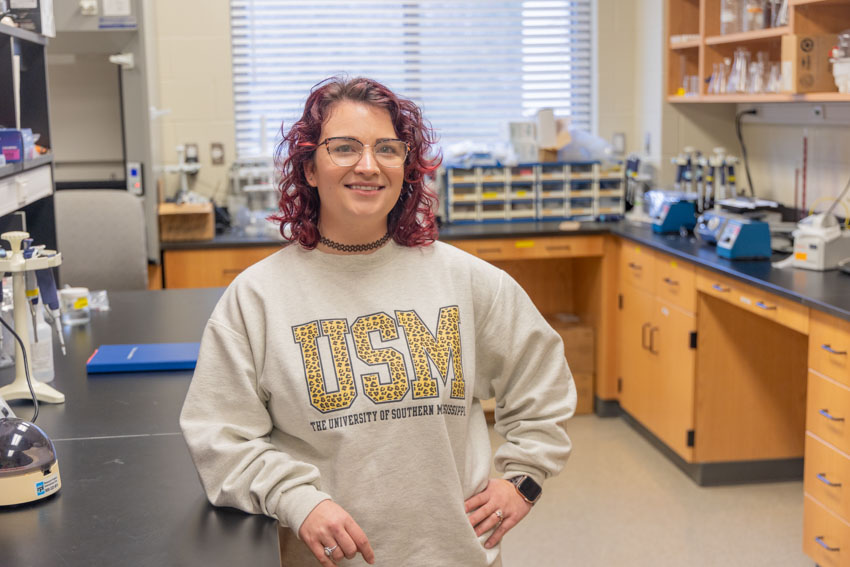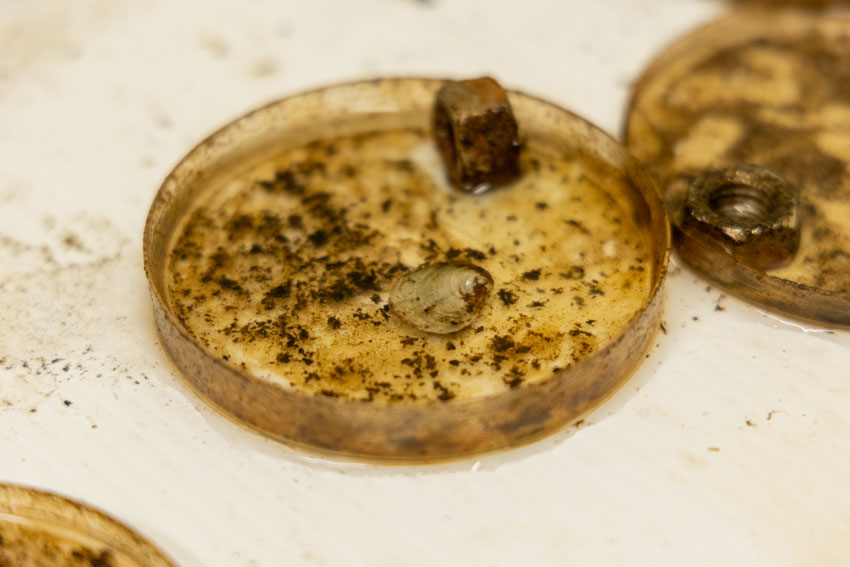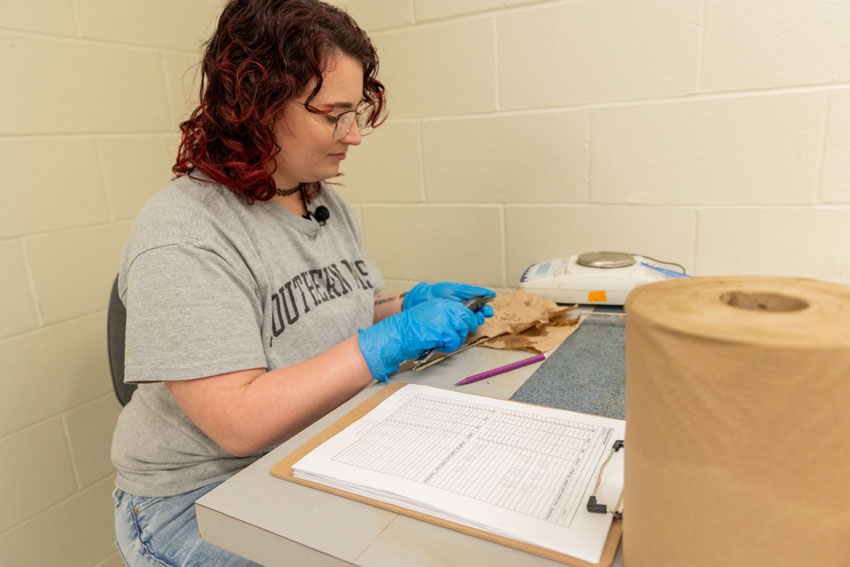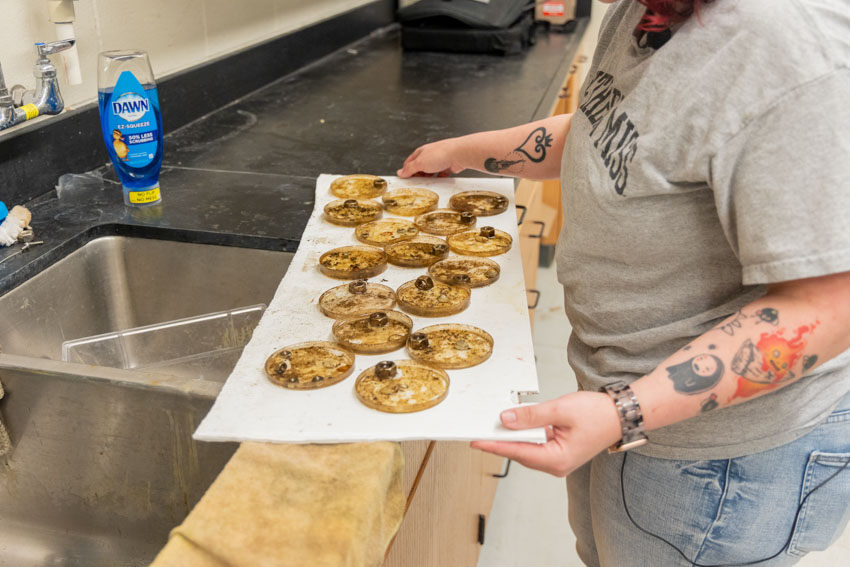USM SOSE Honors Student Studying Effects of Oxygen, pH in Seed Oyster Growth
Tue, 02/20/2024 - 09:47am | By: Gabriela Shinskie

Karina Ledezma, a senior from Biloxi in The University of Southern Mississippi (USM) School of Ocean Science and Engineering (SOSE), took her honors thesis to new depths while studying the growth patterns of seed oysters exposed to low oxygen and pH levels in the Mississippi Sound.
Ledezma’s research is just one example of how the SOSE prepares USM students for exciting careers in the blue economy. Her project began in summer 2023 under her advisor, Dr. Kim De Mutsert, an associate professor in the SOSE Division of Coastal Sciences, who received funding from the National Oceanic and Atmospheric Administration (NOAA) to support a Research Experience for Undergraduates (REU) student.
Through her REU project, Ledezma was able to study effects of ocean acidification, low oxygen and low pH on juvenile oysters, also called seed oysters.

“These are laboratory experiments where we can vary the water quality like temperatures, salinity, oxygen,” Dr. De Mutsert explained. “When we lower the oxygen, that affects the pH as well.”
In collaboration with graduate student Abiola Obafemi, Ledezma combined 480 seed oysters from the Thad Cochran Marine Aquaculture Center (TMAC) and placed them into 24 tanks. Every day for 2 months, she would measure the tank’s temperature, salinity, oxygen and pH level and feed the oysters; every five days, she would clear the oyster from 4 tanks of the experiment to measure growth, survival, total weight, shell dry weight, and meat dry weight. The ratio of the last two measurements is used as a condition index for oysters, where meatier oysters get a higher condition index. One month the seed oysters experienced normal oxygen levels (normoxia), and one month the oysters experienced low oxygen levels (hypoxia). The pH co-varied with the oxygen levels.

Many times, when low oxygen is present, it is followed by low pH. A seed oyster shell is made up of calcite that can dissolve slowly if the pH is low. When the oyster shells dissolve, this has a neutralizing effect on pH.
“When we looked at survival,” Dr. De Mutsert noted. “It was clear that they survived better when there was enough oxygen. But when we looked at condition index, it was higher in the low oxygen condition.”
“We dove a little deeper into this puzzling result by comparing shell weight and meat weight separately. When the weight of the meat is more than the weight of the shell, the condition index goes up. While meat weight stayed the same in both oxygen treatments, shell weight was significantly lower in the hypoxic condition! This was our clue that the shells were dissolving,” De Mutsert continued.
“Some days during my summer internship were eight-hour days in the lab or the field,” said Ledezma.

This in-depth experience turned out to be a positive one, since Ledezma approached Dr. De Mutsert the fall after her summer REU to ask if she could do her honor’s thesis in her lab. She has been continuing her research on the same topic for her honor’s thesis and is now working toward graduating as an honor’s student in May 2024.
The Gulf Coast’s unique marine science environment provides hands-on research opportunities for students like Ledezma, who plans to pursue a master’s degree upon graduation. She has already secured an internship at the Naval Research Lab at Stennis Space Center, which will benefit her master’s thesis work.
Learn more about the student research opportunities and programs at USM%E2%80%99s%20School%20of%20Ocean%20Science%20and%20Engineering.
Photos by Tavia Marinovich.